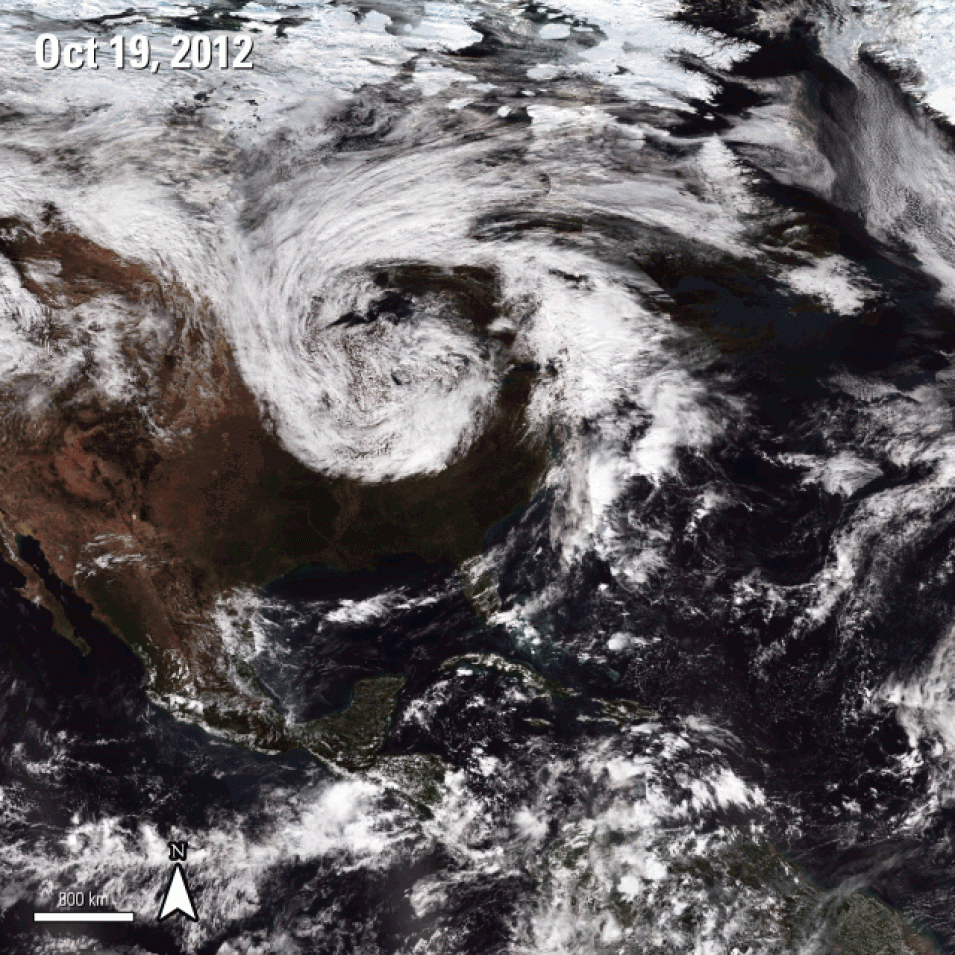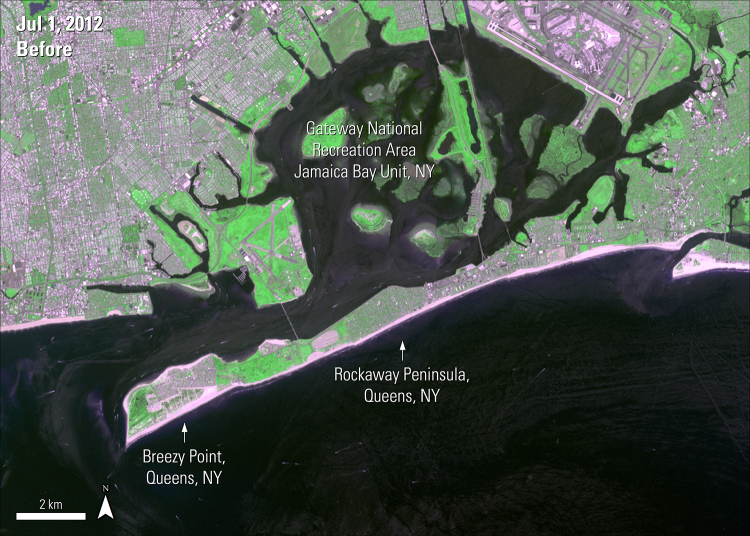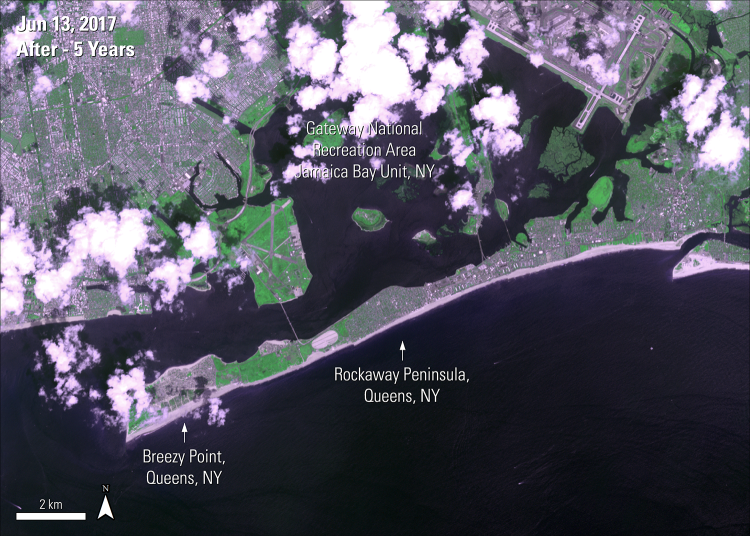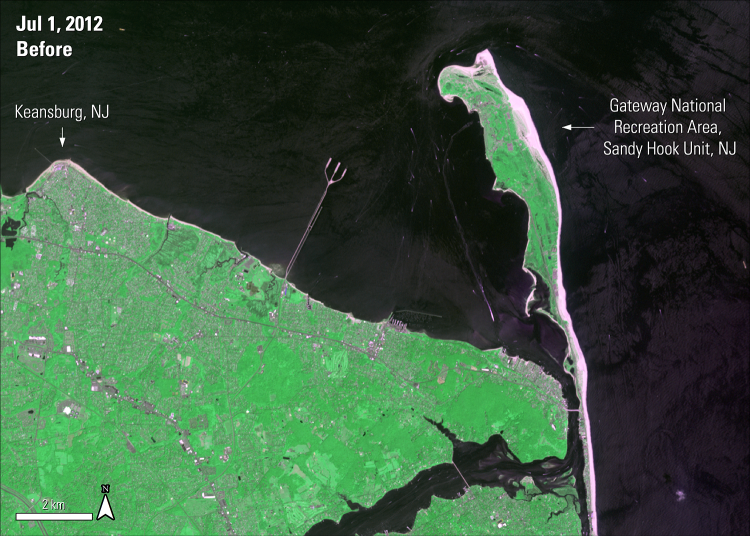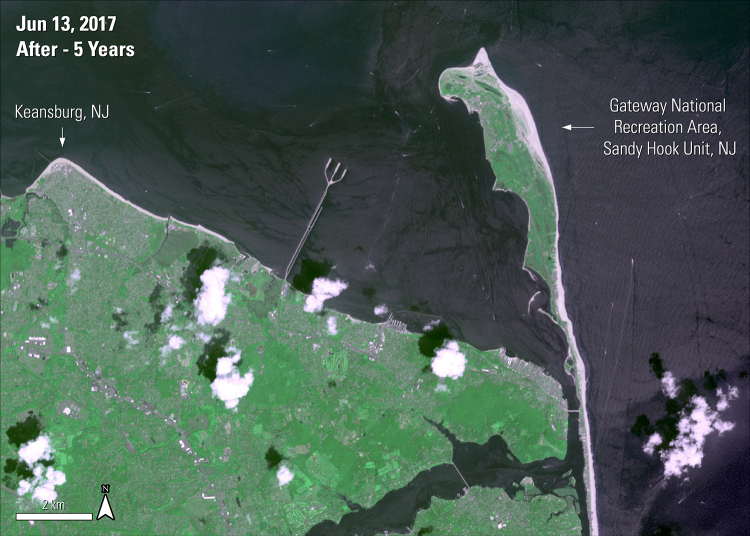References
Blake, E.S., Kimberlain, T.B., Berg, R.J., Cangialosi, J.P., and Beven II, J.L., 2013, Tropical cyclone report—Hurricane Sandy (AL182012), 22–29 October 2012: National Hurricane Center, accessed June 6, 2017.
Diakakis, M., Deligiannakis, G., Katsetsiadou, K., and Lekkas, E., 2015, Hurricane Sandy mortality in the Caribbean and continental North America: Disaster Prevention and Management, v. 24, no. 1, p. 132-148. https://doi.org/10.1108/DPM-05-2014-0082.
Drye, W., 2012, A timeline of Hurricane Sandy’s path of destruction: National Geographic Voices, November 2, 2012, accessed June 9, 2017.
Keansburg, New Jersey, 2012, Flood inundation map, accessed June 9, 2017.
Lasky, J., 2017, Breezy Point, Queens—Tested by Hurricane Sandy: The New York Times, May 24, 2017, accessed June 9, 2017.
Metropolitan Transportation Authority, New York City, 2015, Superstorm Sandy—Fix & fortify efforts continue, accessed June 9, 2017.
National Aeronautics and Space Administration, 2013, Hurricane Sandy (Atlantic Ocean), accessed June 8, 2017.
National Oceanic and Atmospheric Administration, 2017, Above-normal Atlantic hurricane season is most likely this year: National Oceanic and Atmospheric Administration News & Features, May 25, 2017, accessed June 7, 2017.
National Park Service, 2015, Gateway recovers from Hurricane Sandy, accessed June 9, 2017.
National Weather Service National Hurricane Center, Saffir-Simpson Hurricane Wind Scale, accessed June 9, 2017.
Sullivan, K., and Uccellini, L., 2017, Service assessment hurricane/post-tropical cyclone Sandy October 22-29, 2012, accessed June 19, 2017.
Subaiya, S., Moussavi, C., Velasquez, A., and Stillman, J., 2014, A rapid needs assessment of the Rockaway Peninsula in New York City after Hurricane Sandy and the relationship of socioeconomic status to recovery: American Journal of Public Health, v. 104, no. 4, p. 632–638, accessed June 9, 2017. http://dx.doi.org/10.2105/AJPH.2013.301668.
The Weather Channel, 2016, 4 years after superstorm Sandy, some towns still wrestle with consequences of the storm, accessed June 19, 2017.
